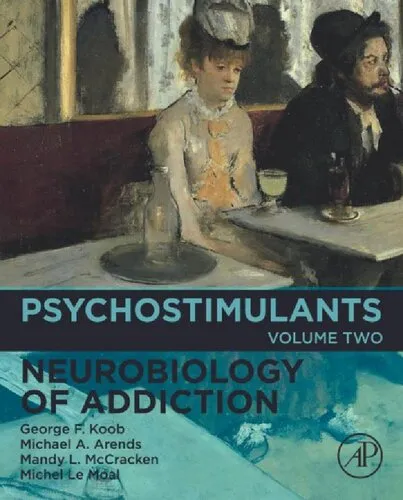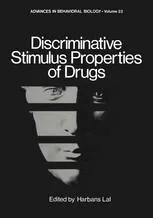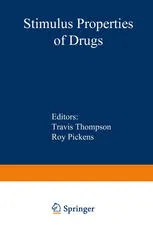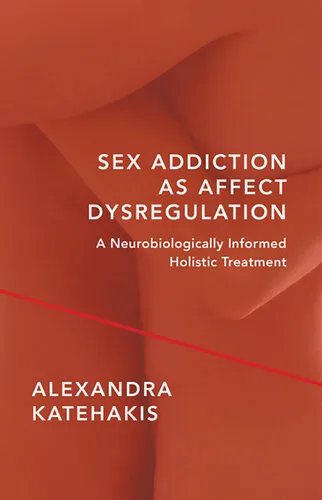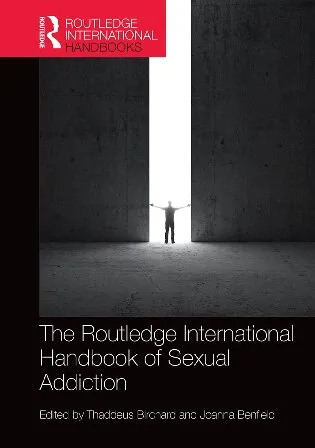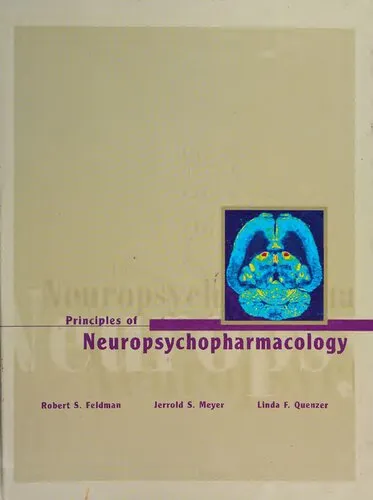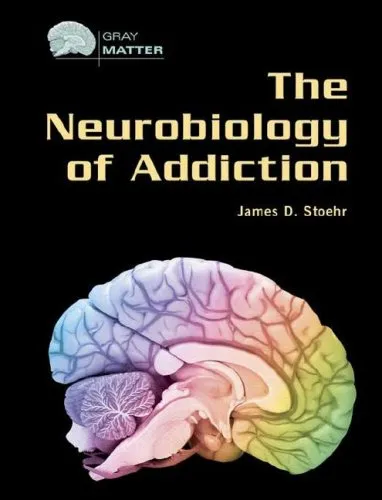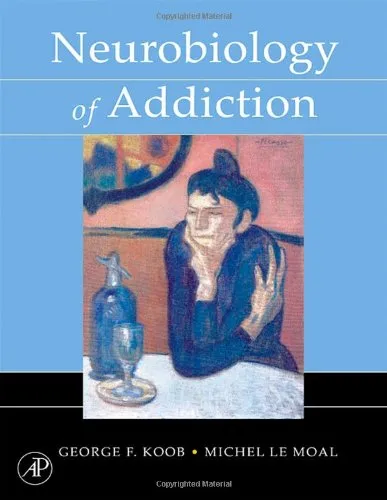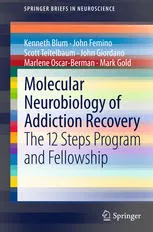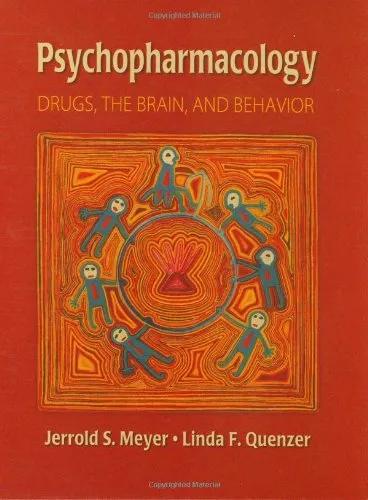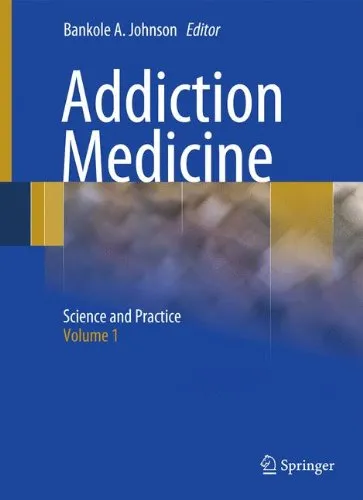Psychostimulants (Volume 2) (Neurobiology of Addiction Series (Volume 2))
4.5
بر اساس نظر کاربران

شما میتونید سوالاتتون در باره کتاب رو از هوش مصنوعیش بعد از ورود بپرسید
هر دانلود یا پرسش از هوش مصنوعی 2 امتیاز لازم دارد، برای بدست آوردن امتیاز رایگان، به صفحه ی راهنمای امتیازات سر بزنید و یک سری کار ارزشمند انجام بدینکتاب های مرتبط:
مقدمهای جامع بر کتاب "Psychostimulants (Volume 2) (Neurobiology of Addiction Series)"
کتاب Psychostimulants (Volume 2) بخشی از مجموعه معتبر Neurobiology of Addiction Series است که به بررسی علم عصبشناسی اعتیاد و تأثیرات روانشناختی محرکها (Psychostimulants) میپردازد. این کتاب توسط کارشناسان برجستهای همچون "George F. Koob PhD"، "Michael A. Arends B.S."، "Mandy L. McCracken PhD"، و "Michel Le Moal MD" نوشته شده است. با استفاده از یافتههای پیشرفته علمی، این اثر به طور خاص به جستجوی عمیق در سازوکارهای مولکولی، زیستی و رفتاری اعتیاد به محرکها پرداخته و دیدگاهی جامع برای محققان، متخصصان بالینی و علاقمندان به این حوزه فراهم میکند.
خلاصهای جامع از کتاب
این جلد از مجموعه، به طور اختصاصی مطالعات مربوط به مواد روانگردانی مانند کوکائین، آمفتامین، و متآمفتامین را مورد بررسی قرار میدهد. در این کتاب، تعامل بین مسیرهای dopaminergic مغز و تأثیرات مستقیم این مواد بر سیستم پاداش (Reward System) تحلیل شده است. علاوه بر این، تغییرات اپیژنتیکی (Epigenetic)، اثرات طولانیمدت روانشناختی، و تأثیرات اعتیاد بر رفتارهای اجتماعی افراد بهطور دقیق تحلیل شدهاند. این اثر همچنین اهمیت استراتژیهای درمانی فعلی، از جمله رواندرمانی و داروهای متمرکز بر تعدیلکنندههای عصبی، را ارائه میکند و نقاط ضعف و قوت هر یک را برجسته میسازد. مهمتر از همه، خواننده با روشهای تحقیقاتی پیشرفتهای مانند Functional MRI و Genetic Profiling آشنا میشود که امکان درک بهتر واکنش مغز به محرکهای اعتیادآور را فراهم کرده است.
یادگیریهای کلیدی (Key Takeaways)
- آگاهی نسبت به مکانیسمهای عصبشناختی و زیستشناختی موثر در اعتیاد به Psychostimulants.
- شناخت تأثیرات اعتیاد بر مسیرهای dopaminergic و سیستم پاداش مغز.
- استفاده از رویکردهای نوین تحقیقاتی شامل تکنولوژیهای تصویربرداری پیشرفته مانند Functional MRI.
- بررسی تغییرات اپیژنتیکی ناشی از مصرف طولانیمدت مواد مخدر و پیامدهای آن.
- ارائه استراتژیهای درمانی، با تمرکز بر کارآیی رواندرمانی و مداخلات دارویی.
نقلقولهای معروف از کتاب
"Addiction is not only a disease of choice but also a disease of the brain, where substances like Psychostimulants fundamentally hijack reward mechanisms."
"Understanding addiction requires the synthesis of molecular neuroscience, behavioral analytics, and social dynamics."
اهمیت این کتاب
کتاب Psychostimulants درک عمیقتری از پیچیدگیهای ناشی از اعتیاد به محرکهای روانشناختی را ارائه میدهد و بر اهمیت مداخلات علمی برای کاهش بار این مسئله جهانی تأکید دارد. این اثر نه تنها برای متخصصان بالینی و محققان، بلکه برای معلمان، سیاستگذاران، و حتی خانوادههایی که با چالشهای مرتبط با اعتیاد روبرو هستند نیز منبع غنی و کاربردی است. اهمیت این کتاب در توانایی آن در برقراری ارتباط میان یافتههای علمی و اعمال درمانی در دنیای واقعی نهفته است. همچنین، به واسطه پوشش گسترده خود از موضوعات، به یکی از مهمترین منابع موجود در زمینه عصبشناسی اعتیاد به Psychostimulants تبدیل شده و معیار جدیدی برای پژوهش در این حوزه ارائه میکند.
برای هر کسی که به دنبال رویکردهای علمی و عملی برای درک و مقابله با اعتیاد باشد، این کتاب یک منبع بیرقیب است.
Introduction to "Psychostimulants (Volume 2)"
Welcome to Psychostimulants (Volume 2), the second volume in the Neurobiology of Addiction Series, authored by an esteemed team of scientists and researchers: George F. Koob, PhD, Michael A. Arends, B.S., Mandy L. McCracken, PhD, and Michel Le Moal, MD. This book dives profoundly into the world of psychostimulants, offering a comprehensive exploration of their neurobiological impact, complex mechanisms, and their role in addiction. With an interdisciplinary approach combining neuroscience, psychology, and clinical research, this volume is an invaluable resource for academics, clinicians, students, and anyone seeking to understand the intricate nuances of substance use disorders related to psychostimulants.
Building upon the solid foundation set in Volume 1 of the Neurobiology of Addiction Series, this second volume is tailored to provide a detailed examination of psychostimulants such as cocaine, amphetamines, and similar agents. It elucidates the profound effects these substances have on the brain and behavior while addressing critical topics like reward systems, dependency, withdrawal, and lasting brain changes. Through in-depth analyses, the book strives to bridge the gap between experimental findings and their clinical significance.
Detailed Summary of the Book
This volume delves into the scientific foundations of psychostimulant addiction by unraveling how these drugs influence the intricate neurochemical pathways of the brain, especially the dopamine system. By methodically discussing their pharmacological effects and subsequent behavioral consequences, the book explains how psychostimulants create a cycle of reward, reinforcement, and eventual addiction. Chapters are organized to offer an orderly treatment of critical themes, such as:
- The molecular pharmacology of psychostimulants and the neuromodulation of dopamine and other neurotransmitter systems.
- Behavioral changes associated with acute and chronic use, including euphoria, focus, and hyperactivity.
- Adaptive mechanisms of the brain in response to prolonged drug exposure, leading to tolerance and dependence.
- The neurobiological underpinnings of withdrawal and relapse, highlighting the challenges faced by individuals in recovery.
- Potential therapeutic interventions and pharmacotherapies for mitigating dependence and withdrawal symptoms.
With rigorous attention to both preclinical research and clinical applications, Psychostimulants (Volume 2) emphasizes the importance of neuroplasticity, genetic predisposition, and environmental factors in understanding addiction. Practical discussions around prevention, harm reduction, and treatment strategies make this book both scientifically robust and clinically relevant.
Key Takeaways
Psychostimulants (Volume 2) offers numerous insights into the complex interaction between psychostimulants and the brain. Here are the key takeaways from the book:
- Psychostimulants exert their powerful effects primarily through altering dopamine signaling, creating feelings of pleasure and increased focus.
- Chronic exposure to these substances leads to significant neurochemical adaptations, reinforcing addictive behaviors and complicating recovery.
- Understanding the neurobiological basis of addiction is essential for developing effective, evidence-based treatments.
- Relapse prevention requires a comprehensive approach targeting both biological and psychosocial dimensions of substance use disorders.
- Emerging therapeutic strategies, including behavioral interventions and novel pharmacological agents, offer hope for improving recovery outcomes in those struggling with psychostimulant dependence.
Famous Quotes from the Book
The authors have masterfully articulated complex concepts with thought-provoking clarity. Some memorable quotes from the book include:
"Addiction is not a moral failing, but a chronic, relapsing disorder of the brain that requires science-driven solutions."
"Psychostimulants act as a double-edged sword—offering temporary euphoria while secretly altering the brain's framework for self-regulation and reward."
Why This Book Matters
The significance of Psychostimulants (Volume 2) lies in its profound ability to deliver a comprehensive and accessible understanding of one of the most pressing public health concerns—addiction to psychostimulants. By offering an in-depth exploration of the neurobiology underlying substance use disorders, the book empowers its readers to think critically about the interplay between brain chemistry, behavior, and societal impact.
This volume is indispensable for professionals in addiction research and treatment, as it provides cutting-edge insights and synthesizes decades of groundbreaking work in the field. For students and general audiences, it serves as a valuable resource to understand the science behind addiction without oversimplification. At its core, this book is essential reading for anyone seeking to contribute meaningfully to combating the global addiction crisis.
دانلود رایگان مستقیم
شما میتونید سوالاتتون در باره کتاب رو از هوش مصنوعیش بعد از ورود بپرسید
دسترسی به کتابها از طریق پلتفرمهای قانونی و کتابخانههای عمومی نه تنها از حقوق نویسندگان و ناشران حمایت میکند، بلکه به پایداری فرهنگ کتابخوانی نیز کمک میرساند. پیش از دانلود، لحظهای به بررسی این گزینهها فکر کنید.
این کتاب رو در پلتفرم های دیگه ببینید
WorldCat به شما کمک میکنه تا کتاب ها رو در کتابخانه های سراسر دنیا پیدا کنید
امتیازها، نظرات تخصصی و صحبت ها درباره کتاب را در Goodreads ببینید
کتابهای کمیاب یا دست دوم را در AbeBooks پیدا کنید و بخرید
1174
بازدید4.5
امتیاز0
نظر98%
رضایتنظرات:
4.5
بر اساس 0 نظر کاربران
Questions & Answers
Ask questions about this book or help others by answering
No questions yet. Be the first to ask!
